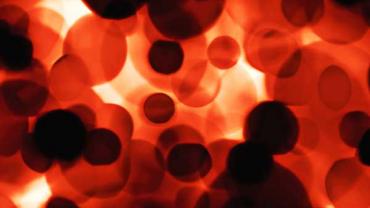
Homocysteine may appear to be nothing more than a basic amino acid whose chemical properties seem to mimic cysteine. But unlike cysteine, the notoriety of homocysteine has grown considerably over the past few decades as researches unveil this amino acid’s dark secrets which make it a culprit in cardiovascular disease.
At first glance, homocysteine doesn’t appear dangerous at all, given the fact that it is a normal byproduct of the routine biosynthesis of amino acids, methionine and cysteine, and produced by the demethylation of dietary methionine. Homocysteine is also a critical player in the methylation pathway. It can be converted back into methionine, which then forms S-adenosylmethionine (SAM), the chief methyl donor for all methylation reactions in cells. In the presence of sufficient methionine, homocysteine is synthesized to cysteine. So far, homocysteine sounds like a fairly good player.
However, homocysteine’s behavior turns sour when it accumulates in the circulatory system, most often a result of genetic and environmental defects. Hyperhomocysteinemia is traditionally diagnosed when levels exceed 15 μmol/L (normal levels range from 5.0 and 15.0 μmol/L), but in functional medicine, practitioners start to take action when the levels exceed 7.0 μmol/L. While several factors can contribute to elevated homocysteine, the most common cause of hyperhomocysteinemia is a single nucleotide polymorphism (C-to-T substitution at nucleotide 677) in the MTHFR gene. This gene encodes for the enzyme methylenetetrahydrofolate reductase (MTHFR) which interacts with folate to break down homocysteine into methionine. Nutritional deficiencies in coenzymes folate, vitamin B6, and vitamin B12 also give rise to elevated homocysteine levels.
Nitric Oxide Pathways
Researchers have discovered a significant correlation between hyperhomocysteinemia and cardiovascular disease, including stroke. In fact, elevated homocysteine is now an independent risk factor for atherosclerotic vascular diseases and ischemic heart attacks. Homocysteine has been linked to endothelial damage and dysfunction through its ability to alter nitric oxide metabolism, which is responsible for vasodilation. According to a 2015 review in the Annals of Nutrition and Metabolism,
“elevated plasma homocysteine level leads to reduction in nitric oxide bioavailability including the disruptive uncoupling of nitric oxide synthase activity and quenching of nitric oxide by oxidative stress, the enzymatic inhibition by asymmetric dimethylarginine (ADMA), endoplasmic reticulum stress with eventual endothelial cell apoptosis, and chronic inflammation/prothrombotic conditions.”
Homocysteine-induced endothelial damage is not just a direct risk factor for cardiovascular disease. Vessel health is imperative for maintaining normal blood pressure, lipoprotein metabolism, and inflammatory pathways.
Hypercoagulation
As homocysteine uses oxidative stress as a primary weapon to disrupt nitric oxide pathways and damage endothelium, it also uses this mechanism to disturb the coagulation pathways, leading to a state of hypercoagulation. Cardiovascular disease usually involves thrombosis, and homocysteine has been shown to stimulate procoagulant factors (including β-thromboglobulin, tissue plasminogen activator, and factor VIIc), suppress anticoagulant factors, activate platelets, and promote platelet adhesion to endothelial cells.
Vascular Smooth Muscle Cell Proliferation
More recently, homocysteine has also been shown to significantly induce proliferation of vascular smooth muscle cells and expression of mRNA and protein of C-reactive protein in these same cells. The result of the increasing proliferation of vascular smooth muscle cells is a narrowing of the arterial lumen space, increasing the risk of thrombosis.
Disruption of the nitric oxide pathways, oxidative stress, hypercoagulation, and vascular smooth muscle cell proliferation may represent some of the greater mechanisms by which homocysteine damages vessels and leads to cardiovascular disease, but many smaller mechanisms are also at work, contributing to the deleterious effects of homocysteine. Further, the outcomes of these disrupted pathways are far-reaching. They are not restricted to the cardiovascular system, but touch renal function, cognitive health, and the host of chronic illnesses rooted in systemic inflammation.
From all outside appearances, homocysteine seems to be an innocent amino acid whose presence is indicative of the normal biochemical function, but as its numbers grow, so does its destructive forces which are targeted against the life-sustaining cardiovascular system.